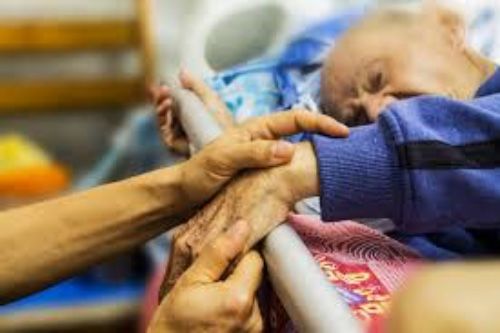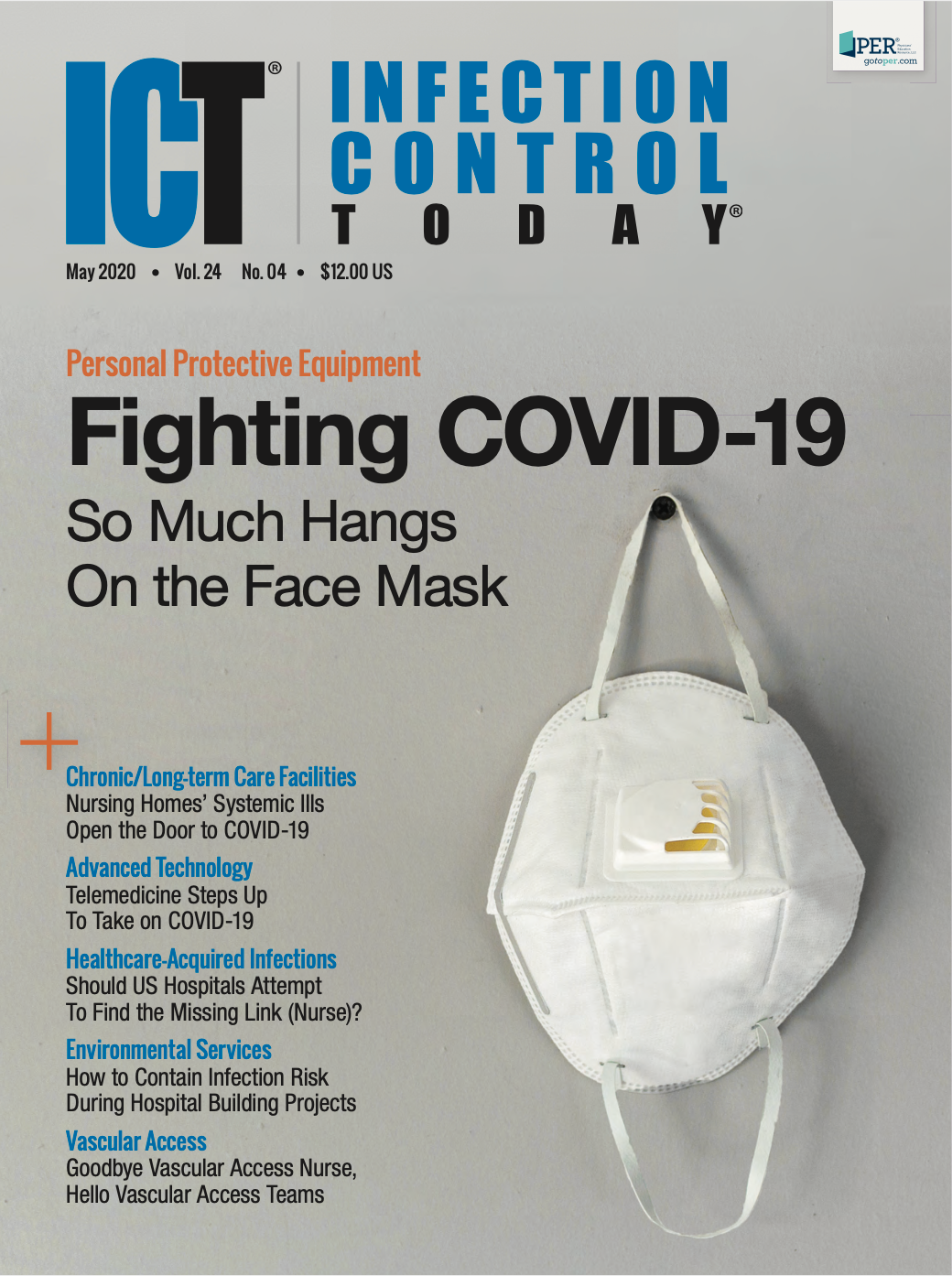Long-Term Care Facilities Particularly Vulnerable to COVID-19 (and Criticism)
The media, public health officials, and politicians are accused of being too quick to find fault with nursing home providers.

It’s a matter of demographics, say the authors of an article in press in the Journal of Post-Acute and Long-Term Care Medicine.1 COVID-19 will disproportionately hit nursing homes and other long-term care facilities because the disease is particularly lethal to the elderly. With that in mind, investigators with Brown University and the Veterans Administration are putting out a call against the blame game. Under a subtitle in the article that is, in fact, labeled, “The Blame Game,” they write: “In recent years, negative outcomes in nursing homes during disaster situations have led the media, public health officials, and politicians to find fault with nursing home providers.” Investigators cite the case in which 4 nursing home workers were charged with criminal homicide in Florida during Hurricane Irma. Without commenting on the particulars of that case, the “historical reality is chilling” given that the epicenter of COVID-19 in the United States is the Life Care Center in Kirkland, Washington where, as of this writing, COVID-19 was found in 81 residents, 34 staff members, and 14 visitors; and 23 people died. “Quite clearly, mortality within long-term care environments related to COVID-19 will be significantly higher than among the general population as a function of resident advanced age and comorbidity rather than substandard care,” the article states. “Some understanding of this fact will certainly be welcomed by the long-term care industry, who are often responsible for delivering difficult care under suboptimal circumstances.” The fatality rate in China for those 70 to 79 is estimated at 8%, and for patients over 80, that shoots up to 14%. “Even as the overall case fatality rate drops, the risk of death among older adults may be 10-fold higher than for younger individuals,” the article states. Mortality rates also increase with the presence of heart or chronic respiratory disease, which are common in long-term care facilities. Rates of heart disease exceed 30% and, for chronic obstructive pulmonary disease, it exceeds 20% in long-term care facilities, say investigators. “Further, extreme functional impairment within long-term care facilities makes close contact between health care workers and residents inevitable,” the article states. “Additionally, cognitive impairment among residents may make contact precautions and isolation a practical impossibility.” Workers should wear gowns, gloves, facemask, and eye protection, but… “This may be challenging in the nursing home environment, where supplies of these items may be limited and are prioritized for acute care hospitals,” the article states. “In long-term care settings, few of which have negative pressure (airborne isolation) rooms, simple measures like pulling room-dividing curtains and closing doors are helpful.” Even the admonishment that workers with symptoms need to stay home can be problematic, as most of the workers live paycheck to paycheck and long-term care facilities are often understaffed. Workers are used to being pressured to work even when sick. “Providing a work environment that allows healthcare workers to call out without repercussion will be critically important,” the study states. Whether to admit someone who has been diagnosed with COVID-19 will be another concern. “Long-term care facilities are a key component of our healthcare system, and we can anticipate significant pressure to receive discharged hospitalized patients for convalescence or to accommodate sicker patients arriving from the community,” the article states. “We do not yet know how long individuals shed transmissible levels of virus, whether older individuals shed virus longer, nor whether cohorting confirmed cases can reduce risk of spread within a facility or contributes to disease severity among those cohorted.” -------------------------------- Q&A: A Conversation with David Dosa, MD, MPH Infection Control Today® reached out to the study’s corresponding author, David Dosa, MD, MPH, an associate professor of medicine and health service, policy & practice at Brown University’s School of Public Health. Infection Control Today®: Your article seems to be a preemptive attempt to dissuade experts and the public for blaming the spread of COVID-19 on long-term care facilities. Is that a fair assessment? David Dosa: I have worked in the area of disaster preparedness and nursing homes since 2003. The universal theme throughout this time is that nursing homes are often ignored by public health officials and at times unfairly held to standards in the post-disaster dialogue (eg, Monday morning quarterbacking) that they were never financially equipped or staffed to handle. Bottom line-nursing homes are not hospitals, yet they are asked to take care of some of our sickest patients. The point of the article was to raise awareness that there are a lot of unanswered questions that are not necessarily first and foremost on the minds of public health officials and politicians. As you have seen in the Washington state case, they really will need to be a key focus in this epidemic. ICT®: You touch on many aspects of what makes dealing with COVID-19 especially difficult in long-term care facilities. Your point, as far as I can tell, is that LTCs are the most vulnerable institutions and yet they have the least to work with? True? Dosa: Nursing homes do have some experience with outbreak situations such as influenza. Nevertheless, they are not set up with negative pressure rooms and staff members are not trained in most circumstances to gown up in full protective gear. In fact, most nursing home residents live in rooms with more than one resident, making infection control extremely difficult. Coupled with the intense functional needs that most nursing home residents require, this makes infection control challenging under optimal circumstances. ICT®: How can that can be addressed? Dosa: Immediate recognition that infection control in the nursing home remains a challenging situation to address. Help from infection control professionals in preparing these facilities to address the COVID-19 crisis. Some additional financial resources from federal and state governments to allow nursing homes to temporarily increase their staffing levels, acquire the necessary equipment, and allow for enhanced screening of staff, vendors, and visitors (if they are allowed) would also be important. ICT®: It starts with making the public aware, correct? Dosa: The public really does need to be aware of why some of the draconian policies related to visitation are going into effect in this environment. The experience in Washington state and the newly announced case in New Orleans makes this all the more apparent. ICT®: Anything else? Dosa: One of the key factors in preventing outbreaks within nursing homes will be paid sick leave for employees-often those with the most contact with patients (LPNs, aides, etc) work multiple jobs at hourly wages. If they don’t work, they don’t eat and that prompts many to come to work even when they don’t feel well. Nursing homes really do need to institute plans to check all who enter for symptoms and send those who are sick home. Paid leave would help in this situation.
References:
Reference:
Dosa D, Jump RLP, LaPlante K, Gravenstein S. Long-term care facilities and the coronavirus epidemic: practical guidelines for a population at highest risk. JMADA. 2020;Mar 13. pii: S1525-8610(20)30249-8. doi: 10.1016/j.jamda.2020.03.004. [Epub ahead of print].

“Ongoing Assault”: How HHS Layoffs Have Eviscerated Infection Prevention Support Across the Nation
April 1st 2025Mass layoffs at HHS and CDC have gutted critical infection prevention programs, leaving frontline professionals overwhelmed, under-resourced, and desperate to safeguard public health.
Unmasking Long COVID: Dr Noah Greenspan on Recovery, Research Gaps, and the Future of Treatment
March 18th 2025Dr Noah Greenspan discusses the evolving understanding of long COVID, current treatment strategies, diagnostic challenges, and the critical need for research and awareness in post-viral syndromes.